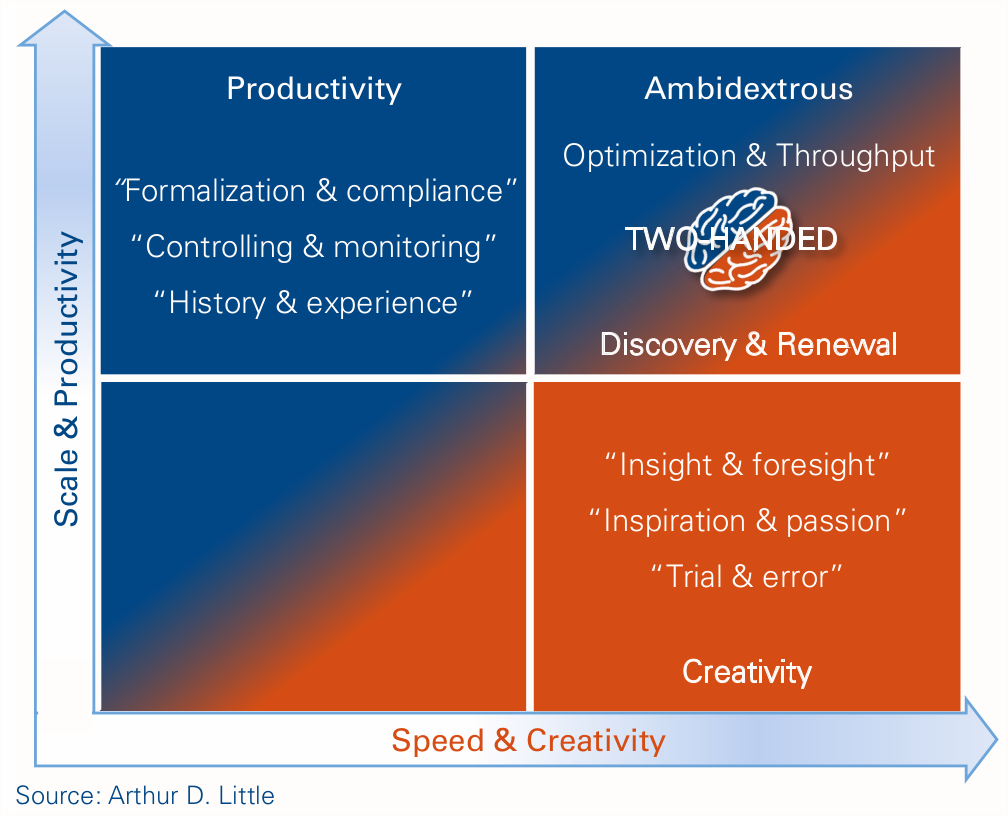
Today’s competitive and highly volatile environment calls for a new kind of flexibility that is not covered by conventional organizational wisdom. Corporate strategies specifically address implications of changing customer requirements, market developments, digitalization, etc., but most often lack tangible guidance on the organizational capabilities needed to address these challenges. As a result, organization development is typically one-dimensional and short-term focused, targeting to either become “fast & creative” or alternately fostering the “scale & productivity” dimension. Winning requires organizations to embrace both dimensions. If a sound balance is achieved, it constitutes one of the rare opportunities to build a competitive advantage of sustainable character, even in today’s era of disruption and hypercompetition.
Ambidextrous as a new organizational archetype
Following our framework, companies are defined as “ambidextrous” when continuously solving the trade-off between being “fast & creative” and “scale-driven & productive”. As such, they establish an equilibrium characterized by a high emphasis on both dimensions . The vast majority of companies focus on either dimension, but those that manage to excel in both are rare. Companies with emphasis on “speed & creativity” possess strong capabilities that enable anticipation, innovation and adaptation. These capabilities translate into corporate attributes such as “insight & foresight”, “inspiration & passion” or “trial & error”. On the contrary, companies excelling in the “scale & productivity” dimension show strong capabilities in planning, optimization and leveraging, resulting in characteristics such as “formalization & compliance”, “controlling & monitoring” and “history & experience”. (See Figure 1.)
An illustrative example combining these capabilities is Amazon.
Always searching for the most innovative business ideas, Amazon strives to explore customers’ desires before people realize them themselves. This search is promoted by a well-established culture of invention, curiosity and a bias for action. In addition to its creative side, Amazon has also proven itself to be a champion of productivity. Not only its logistics, but also its internal processes of scaling new business models are tailored for pure efficiency and standardization. In case a new business approach has proven to be successful, it will be rolled out rapidly, formally established, monitored and aligned for full productivity. Successfully balancing these two dimensions over the last years, Amazon was able to build a sustainable competitive advantage that grew into best-practice across industries.





